#Saqqara Mastabas
Text
Beware the curse of the pharaohs! Howard Carter feared such a curse when he breached the tomb of King Tut, and it seems he was right. Were the tombs of ancient Egypt deliberately seeded with uranium, and was radiation the “disease that no doctor can diagnose”?
21 notes
·
View notes
Text

Saqqara
Egypt
photo cjmn
10 notes
·
View notes
Text
¡Cuidado con la maldición de los faraones! Howard Carter temía tal maldición cuando irrumpió en la tumba del rey Tut, y parece que tenía razón. ¿Se sembraron deliberadamente uranio en las tumbas del antiguo Egipto y fue la radiación la “enfermedad que ningún médico puede diagnosticar”?
0 notes
Text



Statue of Kaipunesut - Met Museum Collection
Inventory Number: 26.2.7
Old Kingdom, Dynasty 4 ca. 2528–2520 B.C. or later
Location Information: From Egypt, Memphite Region, Saqqara, Teti Pyramid Cemetery, Mastaba of Kaemheset, Egyptian Antiquities Service excavations
Description:
Although archaeologists differ in their evaluation of the date of the tomb from which this statue originates, features of the decoration of the mastaba and of other stone statuary in the tomb indicate a possible date in mid-Dynasty 4 for this wooden statue and another in Cairo of Kaipunesut. The early date suits the semicircular eyes and elongated lips of the face.
Few wooden sculptures are preserved from the fourth dynasty. Kaipunesut's belt is finely inscribed with his name and titles, the first being "Royal Carpenter." Perhaps he was involved with making his own fine wooden statues.
#Statue of Kaipunesut#old kingdom#dynasty 4#memphite region#saqqara#teti pyramid cemetery#Mastaba of Kaemheset#met museum#26.2.7#mens clothing#OKMC
1 note
·
View note
Photo

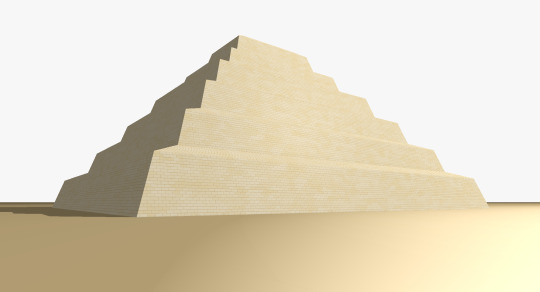


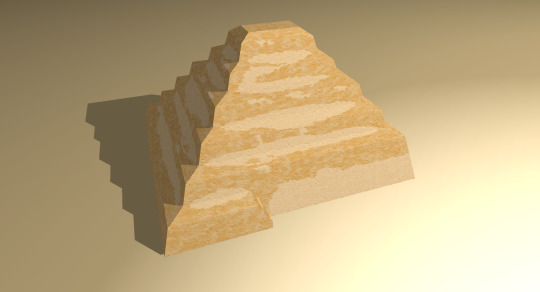
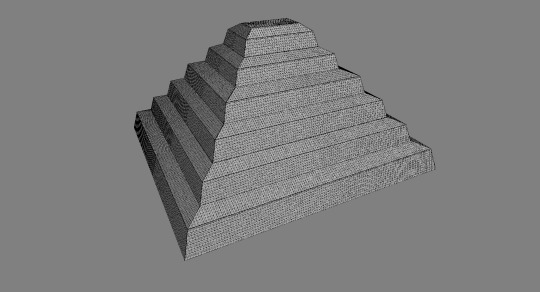




Model of the Step pyramid of the pharaoh Djoser in Egypt
Link to see more about this model on Turbosquid.com:
https://www.turbosquid.com/3d-models/3d-step-pyramid-1869807?referral=amanitacz
Link to the whole gallery:
https://www.turbosquid.com/Search/Artists/amanitacz?referral=amanitacz
Link to the software:
http://www.cazaba.cz/
#graphic#computer graphics#amanitacz#cazaba#3d#model#3d model#TurboSquid#pyramid#pharaoh#djoser#mastaba#tomb#saqqara#sphinx#egypt#nile#desert#old#archaeology#ancient#mummy#king#step#step pyramid
0 notes
Text

Wooden statue with inlaid eyes of the Priest and Scribe Ka'aper (known as Sheikh el-Beled)
Old Kingdom, Late 4th-5th Dynasty, c. 2500 B.C.
Mastaba of Ka-aper, Saqqara Necropolis.
Egyptian Museum, Cairo. CG 34
Read More
505 notes
·
View notes
Text

Statue of the Lector Priest Kaaper, known as Sheikh el-Belad (sycamore wood, eyes made from rock crystal rimmed with copper), from his Mastaba C8 in North Saqqara. Old Kingdom, 5th Dynasty, ca. 2494-2345 BC.
More: https://bio.link/museumofartifacts
522 notes
·
View notes
Text
The Contendings of Horus and Set (and homosexuality in Ancient Egypt)

(The image is the Chester Beatty Papyrus I, written in hieratic, containing the mentioned story)
In my last post I (affectionately) called Set "the Gay Uncle of the Egyptian Pantheon" and promised to elaborate more on it in another post.
(CW: sexuality talk, bits of violence and- lettuce. No strong language)
First, a "little" foreword on homosexuality in Ancient Egypt: this is a very complicated subject as I gathered since, well- we don't know very much about it. The few accounts that survived are either disputed or offer little information on the general attitude towards same-sex relationship outside the single case.
It's also difficult to talk about heterosexuality, homosexuality and bisexuality in ancient times at all since the way we know them is a relatively modern concept (the word homosexuality is first attested in 1868 on a letter to Karl Heinrich Ulrichs by Karl-Maria Kertbeny) and before christianity became mainstream the biggest concerns were at best pointed towards the practices (mostly, Taking It™).
For everything else, relationships were just relationships.
The best known example of a same-sex couple were these guys, since it's likely the earliest recorded in history:

They're Khnumhotep (ẖnm.w-ḥtp(.w)) and Niankhkhnum (nj-ꜥnḫ-ẖnm.w), two royal servants and confidants who had the prestigious task to be the king's head manicurists. In their mastaba tomb in Saqqara are depicted in poses traditionally reserved for couples - like holding hands, embracing and kissing.
However, both of them had wives (Khenut and Khentikawes) and 6 children each.
Ancient Egyptians were very passionate about fertility - which is understandable considering how easily people could die any day for any reason back then. The more children you had and the more the chances that at least one of them survived to adulthood and could carry on jobs and duties.
So as long as you were a (re)productive member of society, it wasn't a big deal that you enjoyed / preferred the company of an individual of your same sex.
The big deal was, as I mentioned, Taking It™ for two main reasons:
Power dynamics. Assuming an active role during the intercourse meant at the same time asserting your dominance and/or humiliating the person on the receiving end of it
Something that I understood as "guy takes up the role of a woman during the intercourse but with none of her reproductive power" which considering how massively important being fertile was to them... well. Makes it a practice as sterile as the desert
And guess who was the god of deserts? our guy Set

(and also storm, disorder and violence to be precise)
His name was written either stš, swtḫ, swtj or stẖ depending on the time period (the Greeks just went with Seth)
He also loved eating this particular vegetable a normal amount (keep it in mind, we'll need that later):

Set was one of the children of Geb (the god of the Earth) and Nut (goddess of the sky) along with Osiris, Isis and Nephthys - who he was married to.
Osiris was king at the time and upheld the rule of ma'at (ideal natural order, fundamental concept of AE culture) along with Isis, his wife-sister.
At some point Set murdered Osiris, tore his body into pieces and scattered them all around Egypt. Reasons for this act may have been:
Osiris kicked him
Osiris had an affair with Nephthys
Isis and Nephthys in the form of either a falcon or a kite searched for all pieces and with the help of Anubis put them all together in what is considered the first mummy in Egyptian tradition. Isis uses her wings to briefly fan new life in Osiris' body and the two conceive a child, Horus.
Osiris' resurrection was not permanent and after his time was out he became ruler of the Duat (the realm of the dead), while Isis raises Horus in secret until he was old enough to come back to challenge Set for his throne.
The dispute took the form of a series of competitions (like racing with boats or fighting each other in the form of hippopotami) and legal judgement before the assembled council of gods, the Ennead.
During one of the competitions Isis tried to help her son while he was locked in combat with Set but accidentally spears Horus - he got FURIOUS and beheaded his mother. Then tried to fix it by sticking on the body a head of a cow. No one will ever notice, amright?
(This gives the mythological origin of the cow horn headdress Isis sometimes is depicted wearing)
Horus repeatedly defeats Set in the various competitions and is largely favoured by the the other gods, but the head of the Ennead was Geb and Geb liked Set so they were stuck in this limbo situation of tie for years.
and then - brace yourself. Now it comes the key moment of this story.
Set and Horus have sex.
I'm serious
The details of this obviously varied from account to account (as most of myths in Ancient Egypt, it was almost expected to have different variations of it depending on the time period and place)
According to one account, it was deliberately only to humiliate him
According to another, he genuinely wanted to bang his nephew other than the act of dominance / humiliation thing, he didn't take no as an answer and got him drunk
According to another one again it was consensual, Horus agreed on condition that Set would've given him part of his strength (my fave)
But Horus was a smart birb and he either caught Set's seed with his hands (don't ask me how) or removed it in secret, so to make Set believe the act was successful. Horus tells his mom about what happened and the morning after they plan something.
Horus wanks on some lettuce and Isis serves it to a clueless Set.
Who eats it all.
The next time the Ennead were called to judgement, Set mentions having laid with Horus as a mean to demonstrate he has asserted his dominance over him so he had the right to claim the throne for himself. Horus disagrees. Geb verifies who of the two had the other's seed in his body and-
Set did.
Horus thus won the dispute
They eventually reconcile with each other and shared the lands to rule (which might have been fertile lands of the Nile to Horus and foreign deserts to Set, or one had the land and the other the sky, or the two traditional halves of the country). With this reconciliation, the dualities they represent are also reconciled into a united whole restoring order after the conflict.
(according to other accounts Geb played the bitch and gave sole reign to Horus, to other much later when Egypt was a bit in a bad place Set was utterly defeated, exiled and/or destroyed)
Funny thing is that Set actually got pregnant from the tainted lettuce and gave birth to either:
A golden disk on his forehead
Thot
Thot's moon disk (in versions where Thot is present during the dispute)
Well ancient Egyptian mythology sure is something huh
#ancient egypt#ancient egyptian lore#ancient egyptian mythology#mythology#contendings of horus and set#moon knight#set#seth#horus#osiris#q tag#sexuality#ancient egyptian sexuality#homosexuality
158 notes
·
View notes
Text


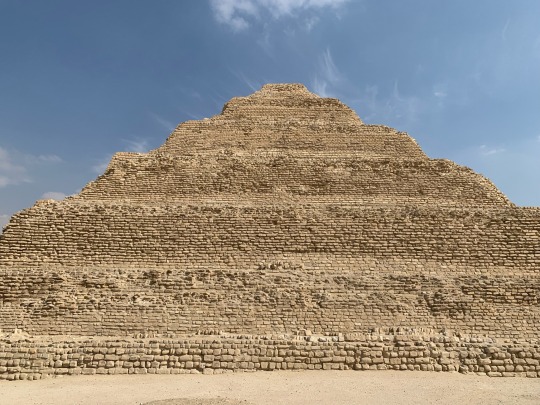
The step pyramid of Saqqara, built for Pharaoh Djoser by his architect, Imhotep. Imhotep's genius later saw him deified and worshipped in later periods. His inspiration was the simple mastaba tomb, which was being used for all Egyptian nobility at the time. By placing one mastaba atop another, he essentially created a stairway up towards the sky and the gods therein.
33 notes
·
View notes
Photo

A stunning photo by @egypteverafter (thank you) of the Nile River with feluccas sailing and the wondrous pyramids in the background. Photo taken from Saqqara, at the Mastaba of Nikauisesi 𓋹𓎬𓋹𓎬𓋹𓎬𓋹𓎬𓋹𓎬𓋹𓎬𓋹𓎬𓋹𓎬𓋹𓎬𓋹𓎬𓋹𓎬𓋹𓎬𓋹𓎬𓋹𓎬 @egyptologylessons 𓋹𓊽𓋴𓆖𓎛𓇳𓎛 © 𓊁𓊁𓊁𓊁𓊁𓊁𓊁𓊁𓊁𓊁𓊁𓊁𓊁𓊁𓊁 ##Ancientegypt #ägypten #egyptology #egypte #egitto #埃及 #مصر #egipto #이집트 #ancientegyptian #ancientegypt #thenile #falucca #pyramids #gizaplateau (at Saqqara) https://www.instagram.com/p/CqVxps7O-Ua/?igshid=NGJjMDIxMWI=
#ancientegypt#ägypten#egyptology#egypte#egitto#埃及#مصر#egipto#이집트#ancientegyptian#thenile#falucca#pyramids#gizaplateau
24 notes
·
View notes
Text
Egito revela antigas oficinas de mumificação e tumbas em Saqqara

Na necrópole de Saqqara, que fica ao sul da capital do Cairo, o Egito informou ter encontrado dois antigos estúdios de embalsamamento para humanos e animais, bem como duas tumbas e uma coleção de artefatos.
A Necrópole de Saqqara é um Patrimônio Mundial da UNESCO e é um dos destinos turísticos mais populares do Egito que você pode visitar com nossos passeios de um dia no Egito. A necrópole está aberta aos visitantes durante todo o ano e há várias visitas guiadas disponíveis.
Saqqara é um antigo cemitério localizado no Egito, cerca de 30 quilômetros ao sul do Cairo. Foi a necrópole da antiga capital egípcia de Mênfis e contém os túmulos de muitos dos governantes mais importantes do Egito, que podem ser visitados em nossos passeios de um dia no Cairo, incluindo a Pirâmide de Djoser.
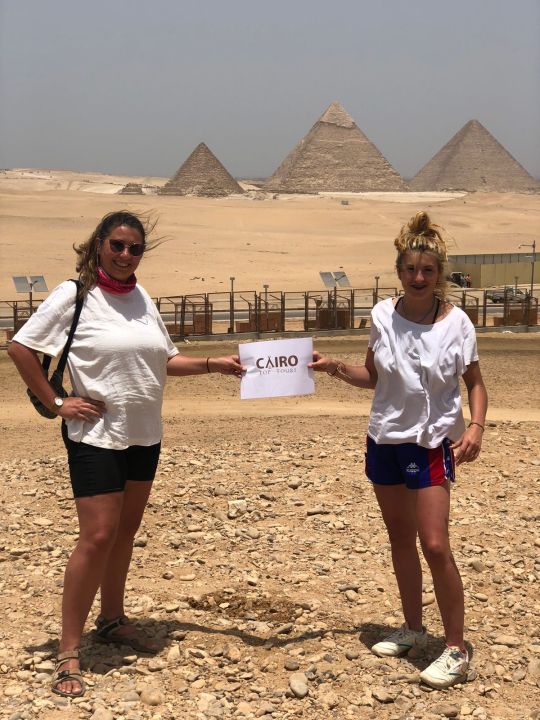
Uma expedição egípcia chefiada por Mostafa Waziri, Secretário Geral do Conselho Supremo de Antiguidades, conduziu a escavação. Enquanto as duas tumbas são do Antigo e do Novo Reinado, os dois estúdios de embalsamamento são da 30ª Dinastia e da era ptolomaica.
A necrópole de Saqqara abriga uma grande variedade de tumbas e monumentos, incluindo pirâmides, mastabas e templos. Com nossos passeios pelo Egito, você poderá ver A estrutura mais famosa de Saqqara é a Pirâmide de Djoser, construída durante a Terceira Dinastia. A Pirâmide de Djoser é considerada o mais antigo complexo completo de construção em pedra da história.
A pirâmide de Djoser é composta por câmaras com camas de pedra onde os mortos se deitavam para mumificação. A oficina de animais também é retangular e construída de barro com piso de pedra. Consiste em várias salas que abrigavam enterros de animais e coleções de vasos de barro, além de equipamentos de mumificação de bronze. As primeiras pesquisas indicam que a mumificação de animais sagrados ocorria nessa oficina.

A primeira tumba a ser descoberta pertenceu a "Ne Hesut Ba", um oficial sênior da quinta dinastia (2400 a.C.) que supervisionava os escribas e servia como sacerdote de Hórus e Maat. Um sacerdote Qadish da 18ª Dinastia (1400 a.C.) chamado "Men Kheber" está enterrado na segunda tumba. Enquanto a tumba do Reino Novo é cortada na rocha com uma porta e um lintel ornamentados com os nomes do falecido e de sua esposa, a tumba do Reino Antigo é uma mastaba com uma fachada de pedra pintada com os nomes do falecido e de sua esposa.
Os locais de Saqqara têm sido palco de inúmeras descobertas nos últimos anos. Não deixe de visitar esse local com nossos passeios de um dia no Cairo saindo do aeroporto, incluindo centenas de caixões coloridos contendo múmias bem preservadas de sacerdotes e estadistas seniores.
Além disso, a excursão às pirâmides de Gizé e à Esfinge é obrigatória para qualquer visitante do Cairo com nossos passeios de meio dia no Cairo. Você verá as Grandes Pirâmides de Gizé.
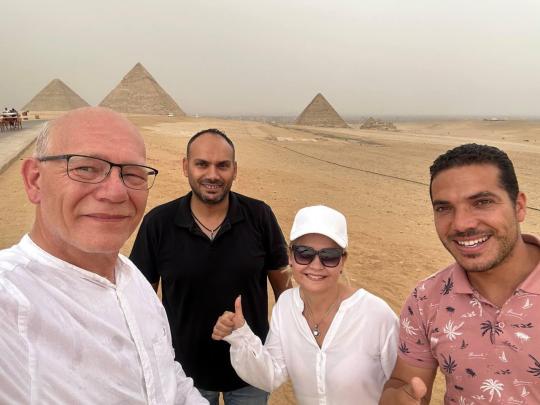
Há muitos passeios de um dia em Luxor disponíveis em Luxor. Há passeios para todos os interesses, portanto, você certamente encontrará um que seja perfeito para você. Você pode visitar alguns dos locais mais famosos de Luxor, incluindo o Templo de Karnak, o Templo de Luxor, o Vale dos Reis e o Templo de Hatshepsut. Além disso, o Abu Simbel Temples Tour é imperdível para qualquer visitante de Aswan. Você verá os dois enormes templos de Abu Simbel, que foram transferidos de seu local original na década de 1960 para evitar que fossem submersos pelas águas do Lago Nasser com nossos passeios de um dia em Assuã.
As excursões de Natal ao Egito são uma ótima maneira de ver o melhor do Egito antigo e moderno. Você começará no Cairo, onde visitará as pirâmides, a Esfinge e o Museu Egípcio. Em seguida, você voará para Luxor, onde explorará o Vale dos Reis, o Templo de Karnak e o Templo de Luxor.
5 notes
·
View notes
Text

Statue of Metri as a scribe, Vth dynasty, discovered in 1926 in his Mastaba at Saqqara's funerary complex. Egyptian Museum, Cairo
95 notes
·
View notes
Text

The Necropolis of Saqqara
Mastaba
Egypt
photo cjmn
289 notes
·
View notes
Text

The Incredible Pyramids of Egypt
The Egyptian pyramids are ancient masonry structures located in Egypt. Sources cite at least 118 identified "Egyptian" pyramids. Approximately 80 pyramids were built within the Kingdom of Kush, now located in the modern country of��Sudan. Of those located in modern Egypt, most were built as tombs for the country's pharaohs and their consorts during the Oldand Middle Kingdom periods.
The earliest known Egyptian pyramids are found at Saqqara, northwest of Memphis, although at least one step-pyramid-like structure has been found at Saqqara, dating to the First Dynasty: Mastaba 3808, which has been attributed to the reign of Pharaoh Anedjib, with inscriptions, and other archaeological remains of the period, suggesting there may have been others. The otherwise earliest among these is the Pyramid of Djoser built c. 2630–2610 BCE during the Third Dynasty. This pyramid and its surrounding complex are generally considered to be the world's oldest monumental structures constructed of dressed masonry.
The most famous Egyptian pyramids are those found at Giza, on the outskirts of Cairo (Seen in the image above) Several of the Giza pyramids are counted among the largest structures ever built. The Pyramid of Khufu is the largest Egyptian pyramid. It is the only one of the Seven Wonders of the Ancient World still in existence, despite its being the oldest wonder by about 2,000 years.
New Research (Speculation) indicates that the Pyramids were NOT built by the Egyptians, but were inherited by them, that they are in fact very much older, and built by "others" it is also speculated that they were in some ways a "power facility" but what sort of power is not stated....!!
16 notes
·
View notes
Text
ka abr statue
The ka abr statue is considered one of the most amazing non-royal statues, the most famous and the greatest in the Old Kingdom. The statue is made of sycamore wood. The statue is 112 cm high. It was found in the mastaba No. C8 near the pyramid of “User Kaf” in Saqqara area, Giza Governorate. It dates back to the era of the family. Fifth era of the Old Kingdom
ka abr statue
The excavation workers,…

View On WordPress
7 notes
·
View notes
Text
Quick Evolution of Egyptian Pyramids
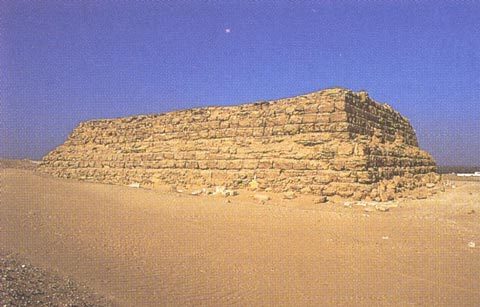

The Mastaba
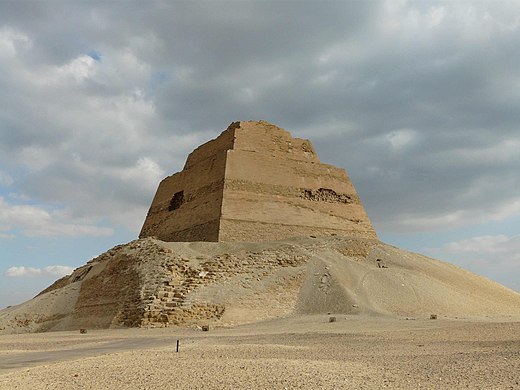
The Bent Pyramid Meidum



The Step Pyramid of Djoser at Saqqara
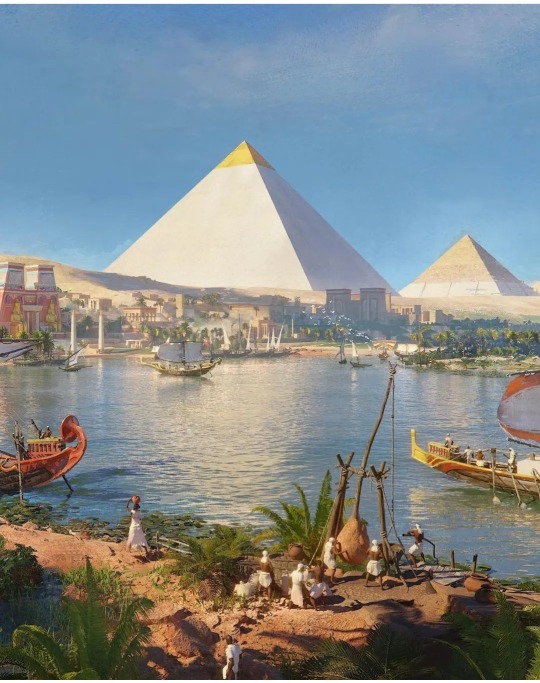

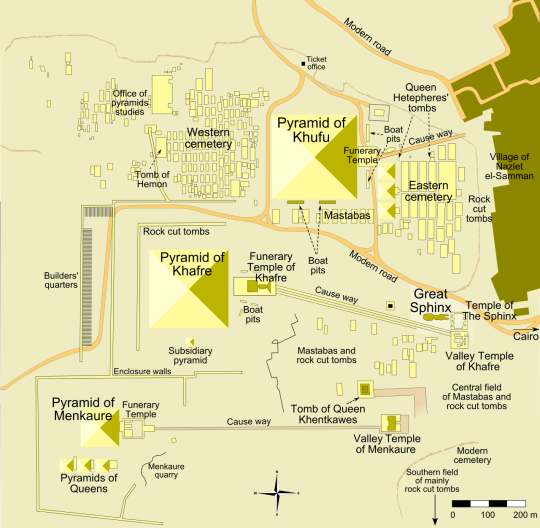

The Great Pyramid of Khufu and Pyramids of the Giza Complex
2 notes
·
View notes